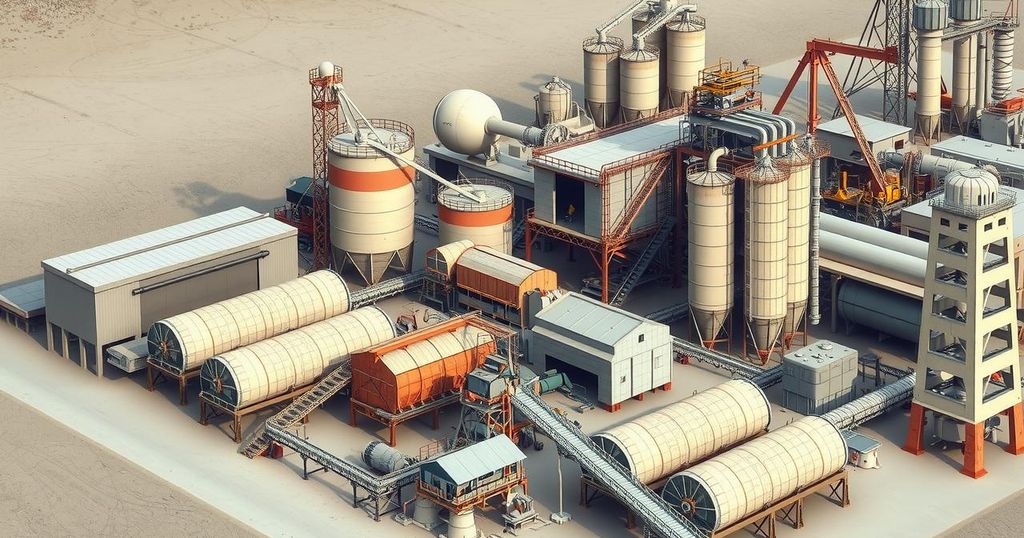Cameroon plans to increase cement production to 12.7 million tons by 2025 with three new plants in Édéa. Under the development led by Chinese investors, the country aims to meet local demand and venture into export markets. Despite the rise in production capacity, prices remain high due to clinker import costs.
Cameroon is poised to enhance its cement production dramatically by introducing three new plants in Édéa, located in the Sanaga-Maritime department. This initiative is projected to elevate the nation’s total cement production capacity to 12.7 million tons by the conclusion of 2025. The growth aims to satisfy local demand while also facilitating expansion into international markets.
Fuh Calistus Gentry, the Minister of Industry, Mines, and Technological Development, recently inspected the new plants and two associated quarries. All three cement factories are being established by Chinese investors in Édéa. The first, Sino Africaine (Sinafcim), is currently under construction with an annual capacity of 1 million tons, employing 200 workers, of whom 90% are Cameroonian. The inaugural batch of cement is anticipated for production in April 2025.
The second plant, Central Africa Cement (CAC), has been operational for several months, boasting a production capacity of 1.5 million tons per year. Currently employing 100 individuals, there are plans to increase this number to 200. Meanwhile, the third facility, Yousheng Cement, located along the banks of the Dibamba River near Douala, is also under construction, aiming for an annual capacity of 1.8 million tons.
Upon the completion of all three plants, Cameroon’s cement production will increase by 4.3 million tons, reaching a total capacity of 12.7 million tons by the end of 2025. This production surge will satisfy the national requirement of 8 million tons and position the country for cement exports to neighboring regions.
The expansion of the cement industry in Cameroon marks a notable evolution, with the total number of production units rising to nine. This shift is significant following the end of the 48-year monopoly held by Cimencam, which is a subsidiary of Lafarge Holcim Maroc Afrique (LHMA) with a capacity of 2.3 million tons. Since 2015, new entrants such as Dangote Cement, Cimaf, Medcem, Mira Company, and Cimpor have invigorated market competition.
Despite the enhanced production capacity, cement prices remain elevated. In major cities such as Douala and Yaoundé, the cost of a 50 kg bag of cement fluctuates between 5,100 and 5,300 FCFA. This pricing dilemma is attributed to the high expenses associated with importing clinker, a crucial component in cement production.
In summary, Cameroon’s initiative to increase its cement production to 12.7 million tons by 2025 demonstrates a significant development in the sector. With three new plants under Chinese investment, the country aims to meet domestic demands and explore international markets. The entry of various competitors into the market further signifies a transition away from monopolistic practices, although high cement prices remain a concern due to import costs.
Original Source: www.businessincameroon.com






